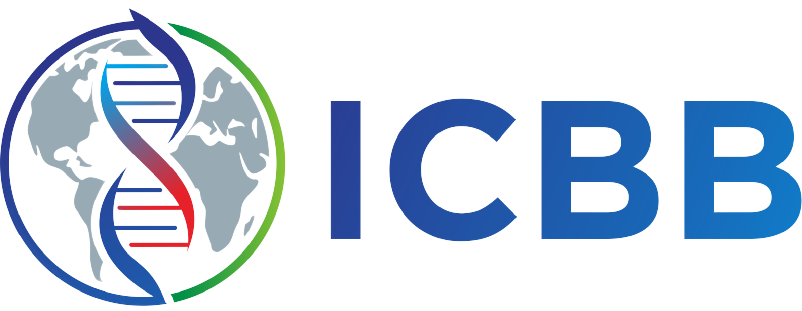The Potential of Herbal Agents for Hair Growth: A Mechanism-Based Review of Hair Follicle Stimulation
Authors
Wayan Cintya Ganes BudastraDOI:
10.29303/jbt.v25i2.9305Published:
2025-06-20Issue:
Vol. 25 No. 2 (2025): April-JuniKeywords:
Hair growth, herbal plants, secondary metabolites.Articles
Downloads
How to Cite
Downloads
Metrics
Abstract
Hair loss is a common condition that can negatively impact an individual’s psychological well-being and overall quality of life. Recent studies have shown that secondary metabolites derived from herbal plants possess potential as natural agents to stimulate hair growth. This review aims to provide a scientific basis for the development of herbal-based hair growth formulations in the future. The literature reviewed was sourced from major scientific databases such as PubMed, Scopus, ScienceDirect, and Google Scholar, with a focus on publications from the last ten years. This review discusses various groups of bioactive compounds including flavonoids, alkaloids, phenolics, polyphenols, phenylpropanoids, and saponins that play a role in follicle regeneration and alopecia prevention. The pharmacological effects of these compounds occur through several mechanisms, such as prolonging the anagen phase of the hair cycle, inhibiting the enzyme 5-α-reductase, enhancing blood circulation via vasodilation, and exhibiting strong antioxidant and anti-inflammatory activities. Findings from in vitro and in vivo studies indicate that these natural compounds show promise in promoting hair growth, although further clinical trials are needed to confirm their efficacy.
References
Ali, K., Li, W., & Wu, G. (2024). Evolution, classification, structure, and functional diversification of steroid 5α-reductase family in eukaryotes. Heliyon, 10(14), e34322. https://doi.org/10.1016/j.heliyon.2024.e34322
Begum, S., Lee, M. R., Gu, L. J., Hossain, J., & Sung, C. K. (2015). Exogenous stimulation with Eclipta alba promotes hair matrix keratinocyte proliferation and downregulates TGF-β1 expression in nude mice. International Journal of Molecular Medicine, 35(2), 496–502. https://doi.org/10.3892/ijmm.2014.2022
Choi, B. Y. (2020). Targeting Wnt/β-Catenin Pathway for Developing Therapies for Hair Loss. International Journal of Molecular Sciences, 21(14), 4915. https://doi.org/10.3390/ijms21144915
Dhurat, R., Chitallia, J., May, T. W., Jayaraaman, A. M., Madhukara, J., Anandan, S., Vaidya, P., & Klenk, A. (2017). An Open-Label Randomized Multicenter Study Assessing the Noninferiority of a Caffeine-Based Topical Liquid 0.2% versus Minoxidil 5% Solution in Male Androgenetic Alopecia. Skin Pharmacology and Physiology, 30(6), 298–305. https://doi.org/10.1159/000481141
Du, F., Li, J., Zhang, S., Zeng, X., Nie, J., & Li, Z. (2024). Oxidative stress in hair follicle development and hair growth: Signalling pathways, intervening mechanisms and potential of natural antioxidants. Journal of Cellular and Molecular Medicine, 28(12), e18486. https://doi.org/10.1111/jcmm.18486
Escamilla-Cruz, M., Magaña, M., Escandón-Perez, S., & Bello-Chavolla, O. Y. (2023). Use of 5-Alpha Reductase Inhibitors in Dermatology: A Narrative Review. Dermatology and Therapy, 13(8), 1721–1731. https://doi.org/10.1007/s13555-023-00974-4
Gupta, A. K., Talukder, M., Venkataraman, M., & Bamimore, M. A. (2021). Minoxidil: A comprehensive review. Journal of Dermatological Treatment, 1–11. https://doi.org/10.1080/09546634.2021.1945527
Indriana, L., Pangkahila, W., & Aman, I. G. M. (2018). Topical Application of Cinnamon (cinnamomum burmanii) Essential Oil has The Same Effectiveness as Minoxidil in Increasing Hair Length and Diameter Size of Hair Follicles in Male White Wistar Rats. Indonesia Journal of Anti-Aging Medicine, 2(1), 13–16.
Iwabuchi, T., Ogura, K., Hagiwara, K., Ueno, S., Kitamura, H., Yamanishi, H., Tsunekawa, Y., & Kiso, A. (2024). Ginsenosides in Panax ginseng Extract Promote Anagen Transition by Suppressing BMP4 Expression and Promote Human Hair Growth by Stimulating Follicle-Cell Proliferation. Biological and Pharmaceutical Bulletin, 47(1), 240–244. https://doi.org/10.1248/bpb.b23-00276
Kang, J.-I., Kim, S.-C., Jeon, Y.-J., Koh, Y.-S., Yoo, E.-S., & Kang, H.-K. (2016). Hair-growth promoting effect of Grateloupia elliptica via the activation of Wnt Pathway. Kor J Phar Macogn, 47(2), 143–149.
Kesika, P., Sivamaruthi, B. S., Thangaleela, S., Bharathi, M., & Chaiyasut, C. (2023). Role and Mechanisms of Phytochemicals in Hair Growth and Health. Pharmaceuticals, 16(2), 206. https://doi.org/10.3390/ph16020206
Li, Y., Zhou, F., Wang, J., Li, B., Xu, H., Yao, E., & Zhao, L. (2022). Influence of Nanoemulsion Droplet Size of Removing Water Blocking Damage in Tight Gas Reservoir. Energies, 15(14), 5283. https://doi.org/10.3390/en15145283
Moattari, C. R., & Jafferany, M. (2022). Psychological Aspects of Hair Disorders: Consideration for Dermatologists, Cosmetologists, Aesthetic, and Plastic Surgeons. Skin Appendage Disorders, 8(3), 186–194. https://doi.org/10.1159/000519817
Myagmar, K., Lkhagvasuren, E., & Semchin, M. (2018). Hair Growth Promoting Effect of Urticadioica L. Central Asian Journal of Medical Sciences, 4(3), 187–193. https://doi.org/10.24079/cajms.2018.09.004
Noviani, V., Thauresia, S., & Simanjuntak, P. (2019). Uji Aktivitas Tonik Rambut yang Mengandung Fraksi Air yang Mengandung Flavonoid dari Ekstrak Etanol Daun Teh Hijau (Camellia sinensis L.). Jurnal Farmagazine, 6(1), 22–28. https://doi.org/10.47653/farm.v6i1.524
Nursiyah, N., Saputri, R. K., & Al-Bari, A. (2021). Hair Growth Activity Test of Hair Tonic that Contain Combination of Green Tea Leaf Extract and Celery Leaf Extract. Ad-Dawaa’ Journal of Pharmaceutical Sciences, 4(2). https://doi.org/10.24252/djps.v4i2.25003
Park, S.-O., Park, B.-S., & Noh, G.-Y. (2015). Action Mechanism of Natural Plant Extracts for Hair Loss Prevention and Hair Growth Promotion in C57BL/6 Mice. International Journal of Pharmacology, 11(6), 588–595. https://doi.org/10.3923/ijp.2015.588.595
Rambwawasvika, H., Dzomba, P., & Gwatidzo, L. (2019). Hair Growth Promoting Effect of Dicerocaryum senecioides Phytochemicals. International Journal of Medicinal Chemistry, 2019, 1–10. https://doi.org/10.1155/2019/7105834
Serruya, R., & Maor, Y. (2021). Hair growth-promotion effects at the cellular level and antioxidant activity of the plant-based extract PhyllotexTM. Heliyon, 7(9), 1–8. https://doi.org/10.1016/j.heliyon.2021.e07888
Shahtalebi, M. A., Sadat-Hosseini, A., & Safaeian, L. (2016). Preparation and evaluation of clove oil in emu oil self-emulsion for hair conditioning and hair loss prevention. Journal of HerbMed Pharmacology, 5(2), 72–77.
Shin, D. W. (2022). The Molecular Mechanism of Natural Products Activating Wnt/β-Catenin Signaling Pathway for Improving Hair Loss. Life, 12(11), 1856. https://doi.org/10.3390/life12111856
Sibbald, C. (2023). Alopecia Areata: An Updated Review for 2023. Journal of Cutaneous Medicine and Surgery, 27(3), 241–259. https://doi.org/10.1177/12034754231168839
Suchonwanit, P., Thammarucha, S., & Leerunyakul, K. (2019). Minoxidil and its use in hair disorders: A review. Drug Design, Development and Therapy, 13, 2777–2786. https://doi.org/10.2147/DDDT.S214907
Susanti, L., Mustarichie, R., Halimah, E., Kurnia, D., Setiawan, A., & Maladan, Y. (2022). Anti-Alopecia Activity of Alkaloids Group from Noni Fruit against Dihydrotestosterone-Induced Male Rabbits and Its Molecular Mechanism: In Vivo and In Silico Studies. Pharmaceuticals, 15(12), 1557. https://doi.org/10.3390/ph15121557
Yim, E., Nole, K. L. B., & Tosti, A. (2015). 5α-Reductase inhibitors in androgenetic alopecia. Current Opinion in Endocrinology, Diabetes & Obesity, 21(6), 493–498. https://doi.org/10.1097/MED.0000000000000112
Youssef, A., Al-Mahdy, D. A., Sayed, R. H., Choucry, M. A., & El-Askary, H. (2025). Evaluation of Hair Growth Promoting Activity of Standardized Soybean Extract on Testosterone-Induced Alopecia. Journal of Medicinal Food, 28(1), 75–86. https://doi.org/10.1089/jmf.2023.0117
Zhang, Y., Ni, C., Huang, Y., Tang, Y., Yang, K., Shi, X., Zhang, Y., Li, Z., Wang, J., Zhu, Y., Li, H., Ma, Y., Lin, J., Wang, J., Liu, Q., & Wu, W. (2021). Hair Growth-Promoting Effect of Resveratrol in Mice, Human Hair Follicles and Dermal Papilla Cells. Clinical, Cosmetic and Investigational Dermatology, Volume 14, 1805–1814. https://doi.org/10.2147/ccid.s335963
License
Copyright (c) 2025 Wayan Cintya Ganes Budastra

This work is licensed under a Creative Commons Attribution 4.0 International License.

Jurnal Biologi Tropis is licensed under a Creative Commons Attribution 4.0 International License.
The copyright of the received article shall be assigned to the author as the owner of the paper. The intended copyright includes the right to publish the article in various forms (including reprints). The journal maintains the publishing rights to the published articles.
Authors are permitted to disseminate published articles by sharing the link/DOI of the article at the journal. Authors are allowed to use their articles for any legal purposes deemed necessary without written permission from the journal with an acknowledgment of initial publication to this journal.


























